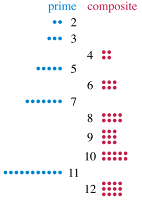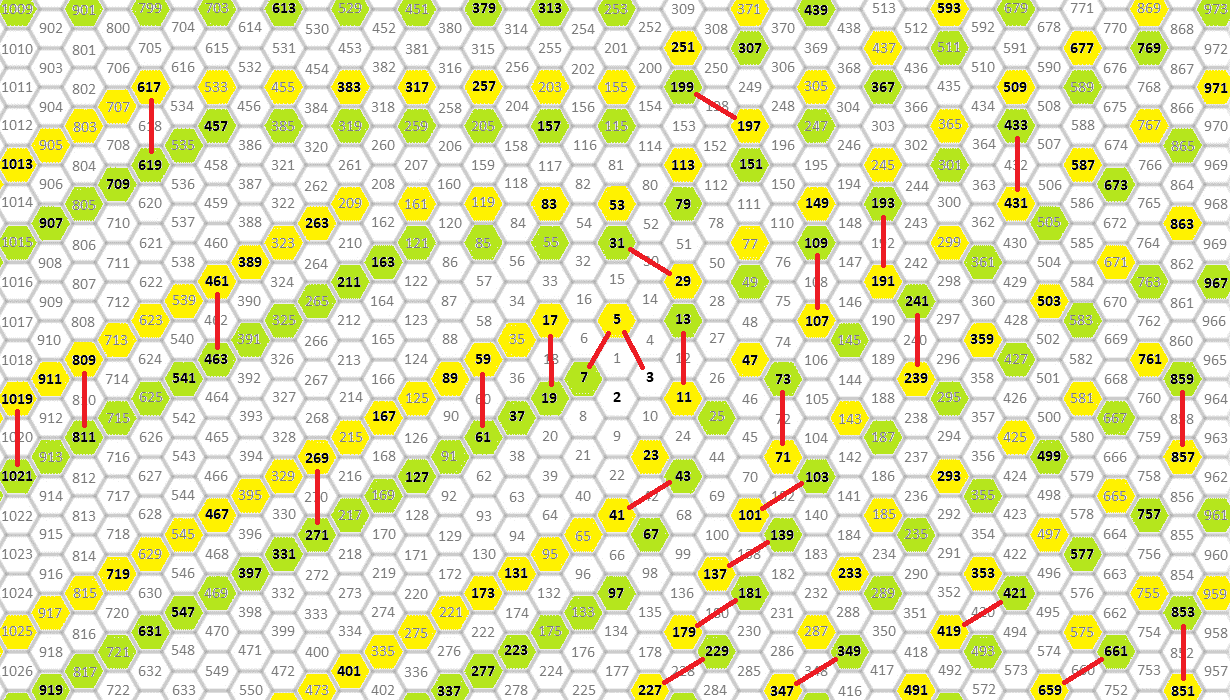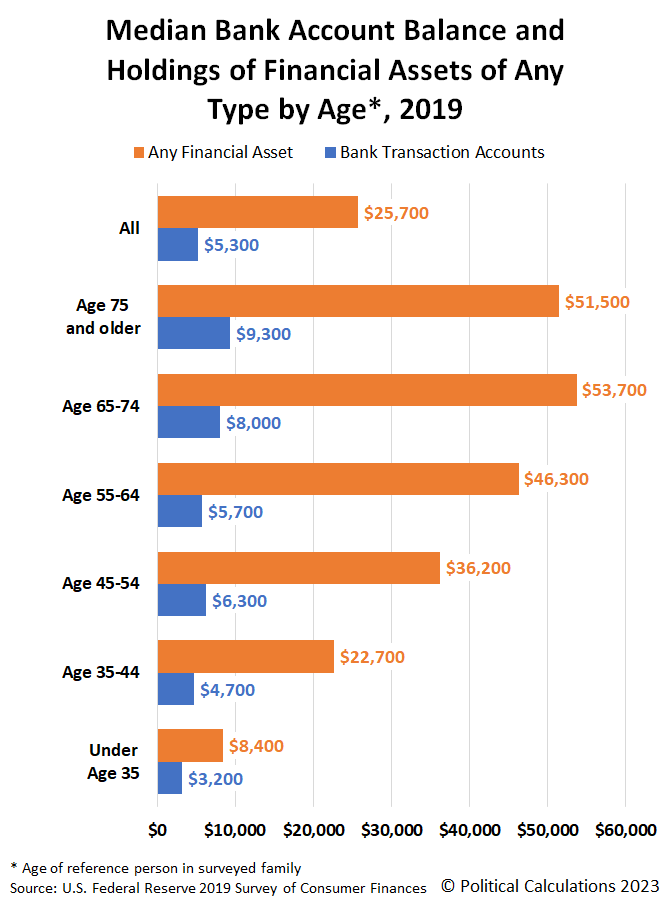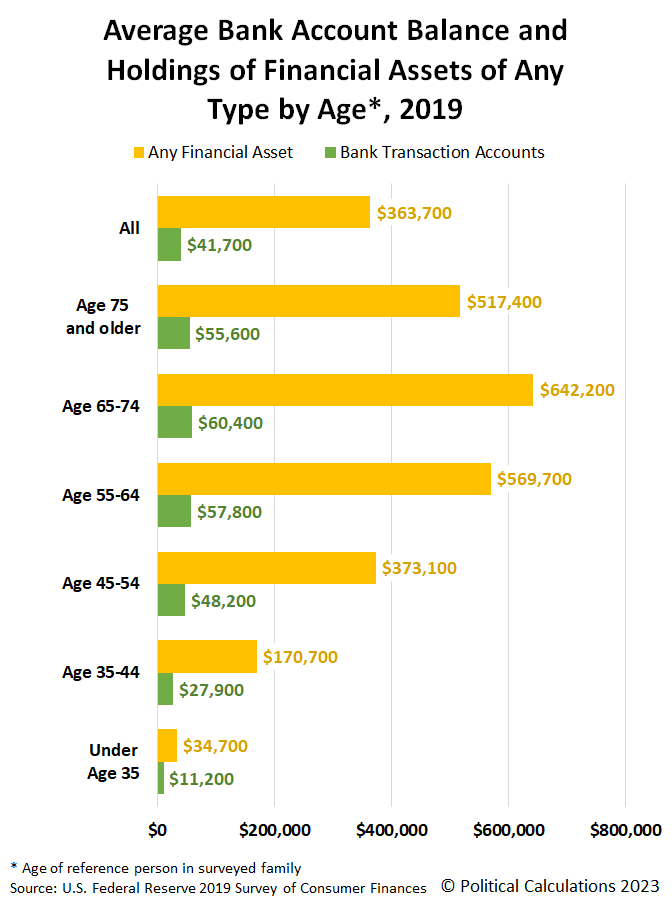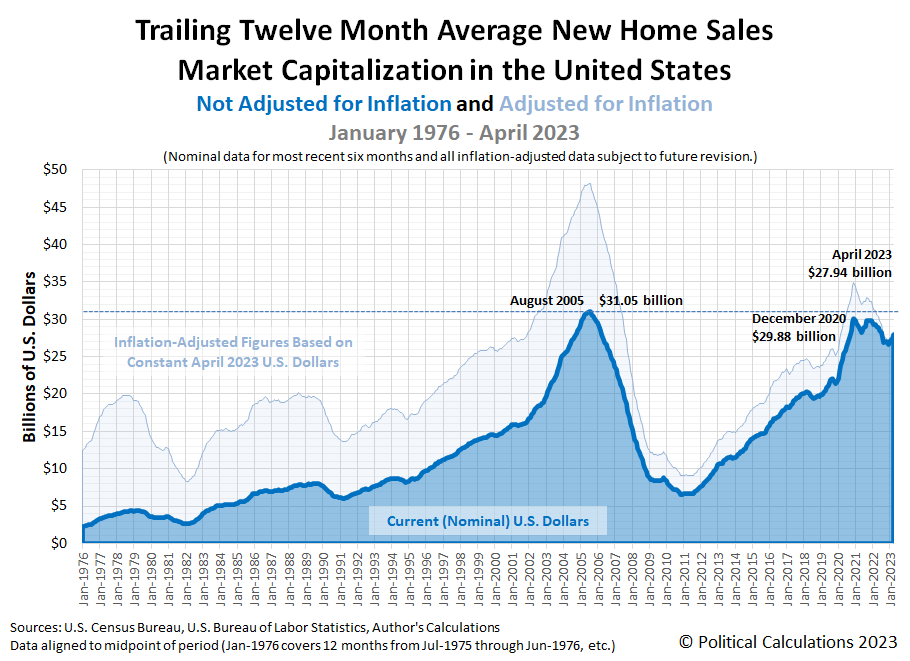Bankruptcies are on the rise in the U.S., which is driving a surge of interest in the news media. Here's a series of recent headlines:
- Corporate bankruptcies climb year-to-date, tracking toward more normal levels
- Corporate bankruptcies are on the rise — and the pain won’t end for a while
- Corporate bankruptcies are creeping up as pressures in the economy grow
- The credit crunch is driving more bankruptcies and could spark a domino effect of defaults at larger firms, investment manager says
- FirstFT: Corporate bankruptcies rise as US credit squeeze tightens
Most of the reports either don't do much to communicate what kind of numbers are being talked about, or in the case of the FT article, focus on a subset of commercial bankruptcy data so it presents an incomplete picutre. We threw together the following chart using data from Epiq Global/Epiq Bankruptcy to track the monthly number of commercial Chapter 11 bankruptcy filings over the past 10 years to provide some longer term context.
Based on what we see in the chart, the first headline provides the best description of where things stand today. The rest are looking forward to a future that's still developing. The big, unanswered questions are when will the current rising tide of commercial Chapter 11 bankruptcies peak before beginning to recede, and how high will the number of filings get before it does?
Image credit: Photo by Melinda Gimpel on Unsplash.
Labels: business, data visualization
The fourth trading week of May 2023 had started out to be a gloomy one for the S&P 500 (Index: SPX). Several Federal Reserve officials signaled early in the week they were considering continuing the Fed's ongoing series of rate hikes in June because of their concerns U.S. inflation has not sufficiently abated.
That potential was enough to send the index down nearly 1.9% from the previous week's close by Wednesday, 24 May 2023.
But the fear that dragged stock prices down reversed during the next two trading days, as a "Unprecedented. Cosmological. Unfathomable." earnings report and outlook from Nvidia (NASDAQ: NVDA) sparked a speculative fury benefiting information technology firms advancing on the potential of their new Artificial Intelligence (AI) systems.
That speculative fury drove the level of the S&P 500 some 2.2% higher from where it bottomed, enough to boost the index by 0.3% from the previous week's close to 4205.45, its highest level to date in 2023. And that was *despite* Friday, 26 May 2023's confirmation U.S. inflation is running hotter than expected, all but guaranteeing the Fed will hike the Federal Funds Rate in June 2023.
That volatile action is shown in the latest update to the alternative futures chart, where we find the index' trajectory is still well within the redzone forecast range.
More stuff happened during the week that was, which we've captured in the week's market-moving headlines. Once again, we've all but omitted headlines related to the debt ceiling debate in the U.S., which still isn't moving the needle for stock prices in any meaningful way.
- Monday, 22 May 2023
-
- Signs and portents for the U.S. economy:
- Oil rises 1% as supplies shrink, demand seen higher
- Inflation has eroded U.S. households' financial security, Fed survey shows
- Fed minions signal rate hikes are coming back on the table, say bank problems aren't over, expect unemployment to rise:
- Fed's Kashkari open to holding rates steady in June, WSJ reports
- Fed's Daly offers no hint on prospect of June rate hike
- Bullard: Rates may still need to rise another half-point this year
- Bigger trouble developing in Asia:
- Japan March core machinery orders fall for 2nd straight month
- South Korea May 1-20 exports fall 16.1% on year
- ECB minions excited to keep hiking rates higher:
- S&P 500 Rises 0.02% to 4192.63
- Tuesday, 23 May 2023
-
- Signs and portents for the U.S. economy:
- Oil rises as US gasoline supplies tighten, Saudi says: 'watch out'
- US new home sales, business activity rise to 13-month highs
- Former Fed minion worries about wage inflation, Fed minions' choice to focus on boosting jobs rather than inflation did damage:
- Ex-Fed chief Bernanke says labor costs becoming more prominent in inflation
- Fed's jobs-weighted framework caused more problems than it fixed -research
- Growth signs developing in Japan, Eurozone:
- Japan's factory activity expands for first time in 7 months- PMI
- Euro zone business growth solid in May but shows signs of easing -flash PMI
- ECB minions urged by German bankers to keep hiking rates:
- ECB must keep hiking to tame inflation 'poison', Deutsche Bank CEO says
- ECB needs several more rate hikes, Bundesbank chief Nagel says
- S&P 500 Falls 1.12% to 4145.58
- Wednesday, 24 May 2023
-
- Signs and portents for the U.S. economy:
- Fed minions thinking about more rate hikes, starting to get on board with resetting inflation target higher:
- Fed agreed need for more rate hikes after May meeting was 'less certain'
- Fed's Waller sees a rate 'hike' or a 'skip' in June, but no 'stop'
- Central bankers reaching the end of the line for rate hikes:
- NZ central bank signals done raising rates after hiking to 14-year high
- Taiwan central bank to weigh inflation, GDP in next rate move
- Wall Street sinks as stocks tumble worldwide
- Thursday, 25 May 2023
-
- Signs and portents for the U.S. economy:
- U.S. weekly jobless claims rise moderately; first-quarter GDP growth revised up
- DBRS Morningstar puts U.S. triple-A rating on downgrade warning
- Oil settles lower as Russia downplays additional OPEC+ cuts
- US labor market resilient; declining profits a red flag for economy
- Fed minions still thinking about pausing rate hikes:
- Bigger trouble developing in the Eurozone:
- BOJ minions thinking about changing up never-ending stimulus as economic outlook improves:
- BOJ's Ueda says targeting shorter-duration bond yield among future options
- Japan raises view on economy for 1st time since July 2022
- Wall Street ends higher as Nvidia sparks rush for AI stocks
- Friday, 26 May 2023
-
- Signs and portents for the U.S. economy:
- Oil prices up amid OPEC+ supply cut uncertainty
- US consumer spending surges in April; inflation heats up
- Fitch puts Fannie Mae, Freddie Mac on negative watch as US debt deadline looms
- US core capital goods orders unexpectedly rebound in April
- IMF says U.S. should tighten fiscal policy to help cut persistent inflation
- Fed minions get data to make them rethink pausing rate hikes:
- BOJ minions expected to keep never-ending stimulus alive until sometime in 2024:
- ECB minions getting less worried about inflation:
- Wall Street rallies, European shares see biggest gain in 2 months
Following personal consumption expenditure data that revealed higher than expected inflation, the CME Group's FedWatch Tool now projects the Federal Reserve will hike the Federal Funds Rate by a quarter point when its Open Market Committee meets on 14 June 2023. That would bring the Federal Funds Rate to a target range of 5.25-5.50%, which the tool anticipates will be the peak for the series of rate hikes that began in March 2022. However, the FedWatch Tool anticipates the Fed will then wait until its 1 November (2023-Q4) meeting to initiate a series of quarter point rate cuts at six-to-twelve-week intervals to address building recessionary conditions in the U.S. economy.
The Atlanta Fed's GDPNow tool estimate of the real GDP growth rate for 2023-Q2 plunged to +1.9% from the +2.9% growth rate it anticipated a week earlier.
Image credit: Bullfight at San Marcos Fair, Aguascalientes, Mexico by Tomas Castelazo via Wikimedia Commons. Creative Commons. Attribution-ShareAlike 3.0 Unported (CC BY-SA 3.0).
If you ever want to go down a very deep rabbit hole, and you're mathematically minded, searching out patterns in prime numbers is a great place to begin.
In fact, if you just want to start somewhere simple, try this. Set up a table with six columns. Starting in the first row of the table, with the first prime number, 2, number all the boxes of the table from left to right. Then, move down to the next row of the table and continue the numbering process. Add as many rows as you like.
When you've made a decent-sized table, stop adding rows and go back to visually distinguish the prime numbers among all the numbers you wrote. You should pretty quickly find your first patterns.
We did that exercise, using just the numbers from 2 to 211. Here's the table we generated, along with some of the patterns we were able to identify:
Except for the first row, which has four prime numbers (2, 3, 5, and 7), each subsequent row contains no more than two prime numbers in it. Each of those prime numbers appear in just two columns that we've identifed as Set D, which starts with 5 in the first row, and Set F, which starts with 7.
By setting up the list of numbers this way, we've effectively sieved the full set of integers to exclude multiples of 2 (Set A, Set C, and Set E) and multiples of 3 (Set B and Set E). We find that we can define all potential prime numbers larger than three as a multiple of six (Set E), where we either subtract one to obtain a potentially prime value in Set D or add one to obtain a potentially prime value in Set F.
We can then look at how frequently primes appear in these columns. When both the Set D and Set F values in the same row are prime, these are what mathematicians call twin primes. Whenever Set F in one row is prime and is followed by another prime in Set D in the next row, that's what mathematicians call couple primes. And whenever prime numbers appear next to each other in the same column, either in Set D or in Set F, mathematicians call "sexy" primes.
That last kind of prime is actually a bad mathematical pun. You'll notice that the minimum difference between any two sexy primes is six. In Greek, the word for six is εχι. If you're the kind of mathematician who slurs their words after consuming certain beverages, you might say that the Greek word for six issexi....
Unfortunately, not every value in the Set D and Set F columns are prime numbers. Some are composite numbers, which is to say they are found by multiplying prime numbers together, and even they have a pattern. If you multiply two primes from Set D together, you'll find their product in the Set F column. That's also true if you multiply two primes from Set F together.
But if you multiply a prime from Set D with a prime from Set F, you'll only find the resulting composite product in the Set D column.
These are far from the only patterns going on with the distribution of prime numbers. Back in 1963, Stanislaw Ulam found that when he wrote numbers out in a spiral order on a square grid, the prime numbers would appear in diagonal patterns.
The Coding Train's Daniel Shiffman explains how to generate Ulam's Spiral and develops code to generate it in the following 24 minute video:
The Ulam (or Prime) Spiral forms when numbers are written in order in a spiral pattern on square grid paper, but since we already know that the distribution of primes is linked to multiples of six, what would we find if we repeated that exercise using a hexagonal grid?
The following image illustrates some new patterns that emerge in a hexagonal spiral. Just for fun, we've indicated the prime numbers with boldface font and have colored the hexagons that correspond to Set D and Set F in our original table and have used red lines to connect the twin primes:
Using a hexagonal grid like this, additional relationships can be identified to map out where prime numbers may occur. In practice, that means we can break the Set D and Set F values into subsets that can be independently explored. In 2011, Dmitri Tishchenko mapped 90,000 numbers onto a hexagon grid like this, which gives some tantalizing hints at the underlying structure of primes. He had left the task of visualizing the Set D (6n-1) and Set F (6n+1) on the grid for a future project, which is what inspired us to create our hexgrid chart.
Then again, if you really want to things to the next level, you could write out the numbers using polar coordinates on an Archimedian spiral. The patterns that arise when you do that leads to a whole different story for another long holiday weekend.
References
José William Porras Ferreira. The Pattern of Prime Numbers. Applied Mathematics, Vol. 8, No. 2. DOI: 10.4236/am.2017.82015. [PDF Document]. February 2017.
Image credit: Primes vs Composites by David Eppstein via Wikimedia Commons. Creative Commons CC0 1.0 Universal (CC0 1.0) Public Domain Dedication.
Notes: We've released the Basic Patterns of Primes image, which is freely available via Wikimedia Commons under Creative Commons Attribution-ShareAlike 4.0 International (CC BY-SA 4.0) license.
Not long ago, we looked at how inflation and interest rates changed the mortgage payment for the median new home sold in the United States in the two years between March 2021 and March 2023. As part of that exercise, we tracked down what the median down payment is for homes purchased in the U.S., which was given as 13 percent of the sale price of all homes sold in 2022. For the median new home sold in March 2023, that would be $58,474.
That raised a question. Who has that kind of cash laying around?
To answer the question, we tapped the Federal Reserve's 2019 Survey of Consumer Finances, which reports the median amount of assets held in bank transaction accounts, which includes savings, checking, and money market accounts among others by age group. It also tells us the median amount of financial assets of any type held by age group. The following chart shows that data:
What we find from this median data is that it's unlikely any family at or below the 50th percentile is ponying up the down payment for the median new home sold in the U.S.
Instead, it's much more likely the family buying median new home is closer to the average when it comes to having the financial assets needed to purchase the median new home sold in the U.S. The next chart shows the mean amount of assets held in bank transaction accounts and in any financial assets by age group.
These charts represent data that was collected during 2019. The Federal Reserve will release the data it collected during 2022 later this year, sometime in September 2023.
Analyst's Notes
Financial assets of any type start with bank transaction accounts and adds relatively liquid assets in the total, including as certificates of deposit, savings bonds, bonds, stocks, money in pooled investment funds, retirement accounts, the cash value of life insurance, and other similarly liquid assets.
According to the 2019 Survey of Consumer Finances, the median family income in 2019's survey was $58,600, while the average family income was $106,500. Both the SCF's estimates are less than the U.S. Census Bureau's estimates for total money income received by families in 2019, which were $86,011 and $116,735 respectively.
References
Board of Governors of the Federal Reserve System. 2019 Survey of Consumer Finances. Table 6. Family holdings of financial assets, by selected characteristics of families and type of asset. [Excel Spreadsheet]. September 2020.
Labels: data visualization, demographics
The U.S. new home market expanded in April 2023. The market capitalization of new homes sold in the U.S. built rose during the month, with a surge in the number of new homes sold offsetting a decline in their prices.
The initial estimate of 683,000 new homes sold during April 2023 represents the highest level of this seasonally-adjusted annual rate recorded since March 2022. That month marked the beginning of the Federal Reserve's series of interest rate hikes, which has coincided with an increase in mortgage rates that have negatively affected the affordability of new homes. The time-shifed trailing twelve month average of new homes sold rose to 638,000 on an annualized basis.
Meanwhile, the average sale price of new homes sold in the U.S. declined to $501,000, with the time-shifted trailing twelve month average dipping below $527,500.
Here is the latest update to our chart tracking market capitalization of new homes sold in the U.S., which shows the improving situation for U.S. new home builders:
The chart reveals the time-shifted twelve month average of the U.S. new home market capitalization for April 2023 is $27.94 billion. This figure is an initial estimate, which will be subject to revision during each of the next three months.
The next two charts show the latest changes in the trends for new home sales and prices:
Here's how Reuters reported the continued recovery for the U.S. new home market in April 2023:
Sales of new U.S. single-family homes jumped to a 13-month high in April, boosted by a persistent shortage of previously owned houses on the market and a sharp decline in prices from last year's lofty levels....
"The evidence continues to accumulate that the housing market may have largely adjusted to the higher level of mortgage rates but the decline in the median home price is consistent with the hypothesis that home builders may be tailoring the construction of new homes towards first-time buyers," said Conrad DeQuadros, senior economic advisor at Brean Capital in New York.
New home sales increased 4.1% to a seasonally adjusted annual rate of 683,000 units last month, the highest level since March 2022. March's sales pace was revised lower to 656,000 units from the previously reported 683,000.
Coming out of the first quarter, we were uncertain how strongly the positive momentum in the new home market might continue. The lack of supply of existing homes coming onto the market was a wild card factor we couldn't anticipate, but which is proving to be a positive. It's a welcome development in that the new home market directly boosts Gross Domestic Product. New residential investment, which includes new homes, typically accounts for about 3% to 5% of the nation's GDP.
References
U.S. Census Bureau. New Residential Sales Historical Data. Houses Sold. [Excel Spreadsheet]. Accessed 23 May 2023.
U.S. Census Bureau. New Residential Sales Historical Data. Median and Average Sale Price of Houses Sold. [Excel Spreadsheet]. Accessed 23 May 2023.
Image credit: WikiMedia Commons: Wood-framed House by Jaksmata. Creative Commons Attribution-Share Alike 3.0 Unported License.
Labels: real estate
FIFO has become the most popular accounting method U.S. businesses use to determine both the cost of the goods they sell and the value of the goods they have in their inventories. With about 53% of firms in the S&P 500 (Index: SPX) using the accounting method, which plays a big role in determining how profitable they are on paper, it's high past time we took a closer look at how the First In, First Out (FIFO) accounting method works!
For a really good introduction, here's Excel spreadsheet guru Leila Gharani's eight-and-a-half minute video explaining how the First-In-First-Out (FIFO) accounting method is used to calculate the Cost of Goods Sold (COGS) for a business.
While her examples reflect how a modest amount of inflation can affect a business' cost of goods sold, how might a surge of inflation like what the U.S. has experienced during the past two years affect how profitable it appears to be on paper?
For the answer to that question, let's turn to Breaking Bad Accounting's shorter video from September 2020, which compares how the different the net earnings (or profit) results are for firms using the different accounting methods. Given what happened after inflation was unleashed in 2021, it's somewhat prophetic (although their example is more fun to talk about!):
Under FIFO accounting rules, reported profits soar in an inflationary environment because the calculated Cost of Goods Sold lags behind the rising cost of replenishing their inventories with higher cost goods.
About 16% of the firms making up the S&P 500 use the Last In, First Out (LIFO) accounting method. The remaining firms utilize variations of the Average Cost method. Firms that use the LIFO method see much lower profits than FIFO firms report, while Average Cost firms come out somewhere in between these extremes.
During periods of deflation, the opposite pattern develops. LIFO firms will report the highest profits, FIFO firms will report the lowest, and Average Cost firms come out in the middle again. If prices were stable however, all three methods would produce identical results.
The United States is somewhat unique in allowing firms to utilize any of these methods, and the LIFO method in particular, which is banned under International Financial Reporting Standards. Despite that prohibition, major accounting firms like Price Waterhouse Coopers have recommended private U.S. firms adopt the practice because of the high inflation environment established during the past two years.
Labels: business, ideas, inflation, SP 500
The S&P 500 (Index: SPX) rose 1.65% over its previous week's closing value to end the third week of May 2023 at 4191.98.
It rose primarily as a result of an improved outlook for regional bank stocks, which notably surged during the week. The biggest market moving news of the week came on Wednesday, 17 May 2023, after news Western Alliance had seen its deposits grow by more than $2 billion was disclosed. That announcement was taken as a positive sign that the solvency problems facing regional banks because of the Federal Reserve's series of interest rate hikes is less widespread than had been feared.
That promising development was enough to put the trajectory of the S&P 500 just a little below the middle of the alternative futures chart's redzone forecast range. Which is to say that stock prices are behaving predictably. It is also to say that stock prices are not behaving exceptionally in any way.
We're making that point because the past week's market-related headlines have been jam-packed of references to the debt ceiling debate in Washington, D.C. So many, in fact, it seems to be more the result of an editorial decision to cram it into as many headlines as possible, regardless of whether it's appropriate, than it does of any real market-moving news events. Through 19 May 2023, we find little to no evidence that political debate is having any meaningful material affect on the trajectory of stock prices.
The ongoing situation with regional banks because of their solvency issues however is having more noticeable impact. Here are the past week's market-moving headlines:
- Monday, 15 May 2023
-
- Signs and portents for the U.S. economy:
- Oil gains over 1%, ends losing streak on tightening supplies
- New York factory activity slumps in May - NY Fed
- In the Market: Why US regional banks are doomed to a doom loop
- Some Fed minions claim they may hike rates higher; others signal they won't:
- Bigger stimulus developing in China:
- Bigger trouble developing in the Eurozone, ECB minions thinking their rate hikes aren't denting inflation:
- Euro zone industry output falls sharply, with Ireland plunge
- ECB rate hike impact on inflation small so far, but more coming: ECB Bulletin
- BOJ, JapanGov minions thinking they might change never-ending stimulus:
- Japan govt gives lukewarm response to new BOJ chief's plan for policy review
- Japan's govt, central bank debate whether sustained exit from deflation is near
- Japan's wholesale inflation slows, may ease pressure on BOJ
- U.S. stocks higher at close of trade; Dow Jones Industrial Average up 0.14%
- Tuesday, 16 May 2023
-
- Signs and portents for the U.S. economy:
- Oil dips as weaker China, US economic data offset IEA demand forecast
- US consumer spending appears solid early in second quarter
- US manufacturing production surges in April on motor vehicles
- US homebuilder sentiment rises to 10-month high in May
- Fed minions trying hard to claim they're not done with rate hikes, say they're going to get better at regulating banks:
- Fed's Mester says central bank committed to getting back to 2% inflation
- Fed's Barkin: 'Comfortable' with more hikes if needed - Bloomberg TV
- US bank regulators vow tougher rules, oversight after bank failures
- Bigger trouble developing in China:
- ECB minions wonder why people don't trust them so much anymore, see near zero growth in Eurozone:
- Central banks have lost a degree of trust, ECB's Makhlouf says
- Euro zone Q1 GDP growth confirmed at 0.1% q/q, Q1 exports jump
- Wall Street declines after Home Depot outlook, US retail sales
- Wednesday, 17 May 2023
-
- Signs and portents for the U.S. economy:
- As household budgets tighten, big brands double down in dollar stores
- US single-family building permits at 7-month high; housing slump persists
- Oil settles up $2 on optimism about US debt ceiling, demand
- Economists say Fed minions done with rate hikes, Fed's inspector general grilled over failed oversight of Fed minions' investments:
- Fed to keep rates untouched this year; risk of U.S. default high: Reuters poll
- Fed's watchdog defends work before Senate amid questions over his independence
- Bigger trouble developing in China:
- China's domestic travel recovery marred by anti-spending 'special forces'
- China's home prices rise at slower pace as demand ebbs
- Japan's export growth hits two-year low on weak China demand
- BOJ minions see Japan exit recession:
- ECB minions see inflation rise despite their rate hikes:
- Wall Street gets a revivifying cup of Joe as US banks brighten
- Thursday, 18 May 2023
-
- Signs and portents for the U.S. economy:
- US manufacturers can't shake that inflation feeling even as supply snarls ease
- Oil prices settle down 1%; strong US data boosts dollar
- US weekly jobless claims fall; labor market defying recession fears
- U.S. existing home sales post second straight monthly decline
- Fed minions claim they're not done hiking rates yet:
- Owens Corning hits 52-week high as S&P 500 advances to YTD peak
- Friday, 19 May 2023
-
- Signs and portents for the U.S. economy:
- Oil rebounds on fading risk of U.S. debt default
- Yellen told bank CEOs more mergers may be necessary, CNN reports
- Translation: Yellen believes more bank failures are developing.
- Fed minions thinking about what to do with rates next, reform of bank rules:
- Fed's Powell says risks more balanced, June policy decision unclear
- Fed's Williams says natural rate of interest still low despite pandemic
- Fed's Williams says world of low interest rates still prevails
- Fed's Williams declines to connect monetary policy outlook to neutral rate view
- Fed's Bowman backs 'targeted' bank rules reform but not 'radical' change
- BOJ minions thinking about how to end never-ending stimulus slowly:
- Academics weigh in on how BOJ's Ueda can exit easy policy
- BOJ's Ueda vows to maintain easy policy, rules out chance of early exit
- Japan's inflation stays above BOJ's target, key gauge hits four-decade high
- ECB minions worried about possible bank failures, excited about keeping interest rates high:
- ECB eyes additional steps to tackle bank deposit risks
- ECB needs to keep interest rates 'sustainably high' to combat inflation - Lagarde
- Bank stocks dip as Janet Yellen calls for more mergers - report
The CME Group's FedWatch Tool continues to indicate investors believe the Fed has reached the end of the series it began in March 2022 to combat President Biden’s inflation. However, the FedWatch Tool has pushed back its projection for how long the Fed will hold the Federal Funds Rate at a target range of 5.00-5.25%. It now anticipates will wait until its 1 November (2023-Q4) meeting to initiate a series of quarter point rate cuts at six-to-twelve-week intervals to address building recessionary conditions in the U.S. economy.
The Atlanta Fed's GDPNow tool projects a real GDP growth rate of +2.9% in 2023-Q2, up from the +2.9% growth rate it anticipated a week earlier.
Image credit: Deposit Into Piggy Bank Savings Account by Ken Teegardin via Wikimedia Commons. Creative Commons. Attribution-ShareAlike 2.0 Generic (CC BY-SA 2.0).
Quantum computers have reached a stage of development where breakthoughs are becoming near daily achievements. But how they work remains something of a mystery, because it's very different from the kind of computing technologies that have come into common use over the last six decades.
In the following 10-minute video, Quanta Magazine uses quantum physics to explain how they work and what kinds of problems they're being built to solve:
Quanta's accompanying article is available here. If however you're looking for a easier entry point into understanding how quantum computers work, TheUnlockr has you covered in a slightly longer video:
How long will it take for quantum computers to surpass the capabilities of classical computing technology? A new paper published in May 2023 indicates that day is still far off, with multiple advances still needed in quantum computing technology and programming in order to surpass today's well-established computing technologies.
On the other hand, IBM claimed in 2021 their new quantum chip technology could begin to be able to outperform standard computer chips in two years, which is to say that would potentially happen sometime later this year.
All that is to say it will happen both sooner and faster than many might expect.
Labels: technology
When Justin Fox surveyed a number of financial analysts to learn what their least favorite economic indicator was back in 2010, most identified them dispassionately. Being analysts, of course, that's to be expected.
But some can be remarkably passionate about data they believe doesn't tell them anything useful. When we widened our current day search for the most useless economic statistic, we came across Jim Bianco's glorious 2012 diatribe against the Consumer Confidence Index at The Big Picture.
Because Bianco is a talented analyst, he makes his point, convincingly with data and charts. It really is worth clicking through to read Bianco's commentary, so we won't try to excerpt much of it, but here is a succinct summary of what Bianco finds the Consumer Confidence Index does not tell us about that you might think it would:
- Non-farm Payroll Jobs
- Employment Conditions
- Retail Sales
And here's what Bianco argues it does tell us about:
- The Stock Market (S&P 500)
He faults the survey questions the respondents to the survey used to determine the Consumer Confidence Index are asked to answer:
To most Americans these questions are too abstract. It is like asking them, “what is the weather in the United States and what do you expect the weather of the United States to be?” How does one answer this? You would probably look out the window and describe what you see.
The consumer confidence questions are being answered in a similar manner. Respondents don’t really know how to answer such abstract questions as business and employment conditions, so they describe what they think is the ultimate economic indicator, the stock market’s recent movements. While spikes in gas prices or other economic events (i.e., 9/11, “The Great Recession”) will supersede this method at times, most of the time the stock market is used to formulate answers to the above questions. In the last few months the stock market is up strongly, so it should not be a surprise that consumer confidence is up as well.
Since we do not need an indicator to highlight recent stock market performance, the Consumer Confidence Index becomes rather useless as an economic indicator. If it measures nothing more than recent stock market performance, economists should not be puzzled by the lack of a relationship between something like retail sales and consumer confidence. Consumer confidence and retail sales no longer relate.
In politics, the equivalent in uselessness is the Presidential Approval Rating, which has historically worked much the same way. Except instead of the stock market, the approval rating is often more about what Americans think about gas prices.
In his 2012 analysis, Bianco presented charts to illustrate a generally strong correlation between the level of the S&P 500 and the Consumer Confidence Index from 1999 through 2011. The main exception is the period coinciding with the bursting of the housing bubble in 2006 through the so-called "Great Recession" in 2009, where Americans had other factors weighing on their assessment.
Five years later, Bianco's basic hypothesis still rang true, as Bianco updated his chart illustrating the correlation through mid-2017.
But what about between then and now? We've put together the following chart to show the correlation between the U.S.' Consumer Confidence Index and the S&P 500 from January 2014 through April 2023.
We chose this period to present a few years of overlap between Bianco's 2017 chart with the available data in the years since. What we find is that Bianco's close correlation between the Consumer Confidence Index and the S&P 500 holds up until shortly after the Coronavirus Pandemic Recession began in March 2020.
Then, like after the housing bubble burst in 2006, we see other factors affecting how Americans respond to the Consumer Confidence survey questions. Overall, we see the two follow the same up and down pattern, but that changed noticeably starting from April 2021.
That's when stock prices and the consumer confidence index diverge, with stock prices rising while consumer confidence falls. That divergence coincides with the arrival of inflationary pressures in the U.S. economy.
The S&P 500 and consumer confidence kept moving on divergent tracks until after December 2021, when stock prices changed direction and began falling. That coincides with Wall Street's expectation the Federal Reserve would respond to the escalating inflation with interest rate hikes in early 2022.
Both measures would then go on to reverse and begin rising in the July-October 2022 time frame, shortly after fuel prices peaked and began to fall.
So what does all this mean? Under what we'll call "normal conditions", we'll agree with Bianco's assessment that consumer confidence doesn't tell us anything we cannot divine by watching stock prices. The Consumer Confidence Index is, dare we say, mostly useless indicator in that situation.
But when conditions are not normal, those rare times when it diverges from its correlation with stock prices, we think it may actually be more useful. If for nothing else than to confirm more extraordinary things are occurring within the U.S. economy.
Then again, that's something we can verify more directly and more easily from other data. Analysts trying to divine significance from consumer confidence data or from the closely-related consumer sentiment data aren't adding meaningful value to the world from their exercise.
Image credit: Useless information by Curly via Flickr. Creative Commons. Attribution-NonCommercial 2.0 Generic License (CC BY-NC 2.0).
After the Silicon Valley Bank run in the first quarter of 2023, dividend futures quickly collapsed.
That collapse can best be seen in the CME Group's quarterly dividend index futures for the S&P 500 (Index: SPX) during the fourth quarter of 2023. Going into 10 March 2023, the dividend futures for 2023-Q4 stood at $16.99 per share. It quickly bottomed at $15.94 per share just six days later. Then it bounced as high as $16.41 per share on 21 March 2023 before dropping once more to hit its bottom again on 29 March 2023.
Since then, the outlook for 2023-Q4's dividends has more sustainably improved. When we last presented 2023's dividend futures, the dividends expected in 2023-Q4 had recovered to $16.41 per share as the risk of more bank failures appeared to be concentrated within a handful of regional banks.
Flash forward to today, the following animated chart covering the period from 6 April 2023 through 12 May 2023 reveals that recovery has continued, but has followed a rocky road.
Starting from where we left off on 6 April 2023, 2023-Q4's dividend futures continued to rise, eventually peaking at $16.95 on 24 April 2023. But the specter of more bank failures returned with the First Republic Bank the following weekend, sending dividend futures downward again. After PacWest Bancorp reported it was rapidly losing deposits on 11 May 2023, the outlook for 2023-Q4's dividends has fallen back to $16.75 per share.
That mostly brings us up to date. Individually, the failures of Silicon Valley Bank, First Republic Bank, and Signature Bank represent the second, third, and fourth largest bank failures in U.S. history. Together, their combined deposits of $368 billion dwarfs the $188 billion held by Washington Mutual when it became the largest bank failure in U.S. history in 2003.
The fifth largest bank failure in U.S. history occurred in August 2009 with the collapse of Colonial Bank, which held $20 billion in assets. 2023's bank failures have so far been in been in a league all their own. It's no wonder the prospects for more bank failures is weighing on the outlook for the S&P 500's dividends.
Image credit: Empty bank deposit boxes. Photo by ptone805 via PxHere. Creative Commons. CC0 1.0 Universal (CC0 1.0) Public Domain Dedication.
Labels: dividends, forecasting, SP 500
Welcome to the blogosphere's toolchest! Here, unlike other blogs dedicated to analyzing current events, we create easy-to-use, simple tools to do the math related to them so you can get in on the action too! If you would like to learn more about these tools, or if you would like to contribute ideas to develop for this blog, please e-mail us at:
ironman at politicalcalculations
Thanks in advance!
Closing values for previous trading day.
This site is primarily powered by:
CSS Validation
RSS Site Feed
JavaScript
The tools on this site are built using JavaScript. If you would like to learn more, one of the best free resources on the web is available at W3Schools.com.




